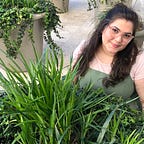How Your Nonprofit Community Can Thrive Online
There’s a lot of proverbial land to cover when thinking about the nonprofit sector and what different roles it plays in how we live our lives as communities, cities, states, etc.
There is every type of nonprofit, from multi-million dollar trusts that preserve our land, to tiny organizations fresh off the ground working from the back of a church building. What makes these nonprofits work regardless of their size are the people who believe in their mission and are dedicated to the communities that support them or are impacted by them.
I work for a small organization in a mid-size city called La Paz Chattanooga. Our staff of seven attempts to serve 10,000 individuals in any given year. We provide case management, referral services, education programs, and workforce development for our local Latinx population.
As this year has forced many nonprofits to rethink their strategies in engaging their target audiences, both donors and individuals who benefit from their programs and services, the conversations that arose in our city’s nonprofit sector were about how helpless we felt trying to continue building relationships and making our communities better while confined to our home offices.
I’m going to brag on my team for a moment, because considering all the curve balls 2020 has thrown at all of us, and the fact that the majority of our service and programming is (was) face-to-face, we harnessed our storm. We hustled in the first weeks of March to ensure that our constituents remained connected and engaged with our organization, albeit in a different set of circumstances. We held on tight to the core characteristics of the community we had already established, and I attribute them to our success.
To be able to migrate a community from in real life interaction to a digital platform where the level of digital literacy varies so much, we had to boil ensure we kept these three ideas at the forefront of our efforts:
A good (online) community is a safe space
One of the very first actions our organization took to ensure the success of our community in a digital space was to create a Facebook Group specifically designated for information and resources surrounding the COVID-19 pandemic as it relates to our local area. All members of the group agreed to a set of rules and staff members acted as moderators, but it was free terrain for our community to receive information in the language they understood and tailored for them to engage with. We had timely press conference videos that group members helped to dub into Spanish and news articles from bilingual journalists. In one week, the group had gained nearly 400 members. It was not only a place for information, but also for members to share their worries about language barriers and working under certain restrictions as immigrants. As the weeks went by and I moderated the daily posts from other members, I witnessed the camaraderie in real time.
A good (online) community has members that care
In Fabian Pfortmüller’s article, “From Me to We — the shift in behavior I see in powerful communities,” he mentions that from his experience he’d seen that, “in powerful communities members go through a personal transformation. Their identity and their behavior shifts.” In our COVID-19 Facebook group, I saw as the members of the group went through this transformation. The same individuals who were asking for advice and resources slowly began to ease into their identity as part of this group. Suddenly, they were confident in their role as a member to provide their own advice, resources and insights. There was more grace given to individuals who may have misspoken, and members would encourage each other and thank them for taking the time to help each other. What was beautiful about this was that it was all autonomous and separate from any moderator — we as a staff were able to see it unfold and at times even take a back seat.
A good (online) community is resilient and fluid
As the months went on, the needs for our online community shifted from advice on homeschooling and resources on how to stay safe, to being candid with each other about losing jobs, and maintaining a positive outlook when many of our community live in multi-family homes. We began hosting Facebook Lives with an array of topics, inviting community partners to speak about healthy coping mechanisms and Latinx lawyers on how to manage their small businesses during closure. At the moment, our members are discussing hardships with back to school procedures and sharing updates from our local health department.
Our organization was lucky in that our constituents were used to communicating with us directly for their needs, we had already positioned ourselves as a trusted local source of information for our community, and that we had a reason to build this incredible online space that helped our city’s Latinx population, but these principles can relate to any online community — preferably under better circumstances.
